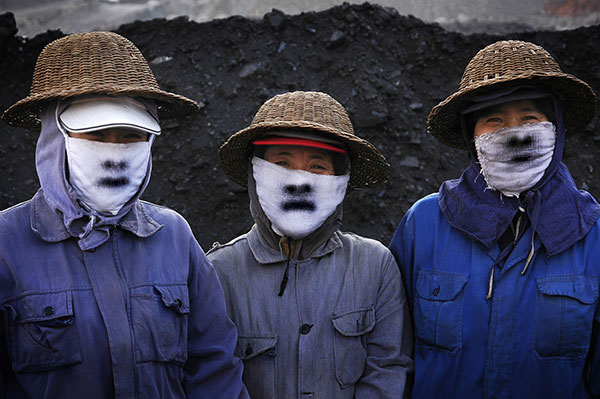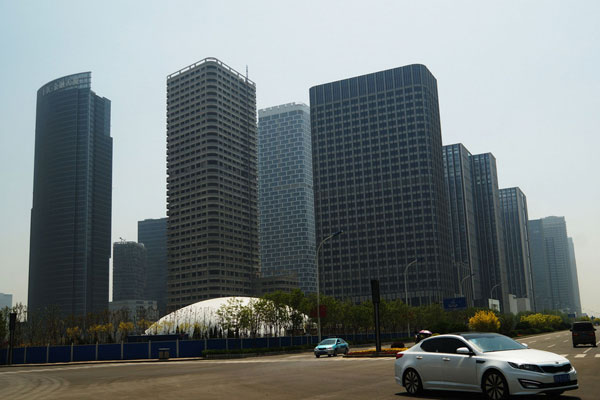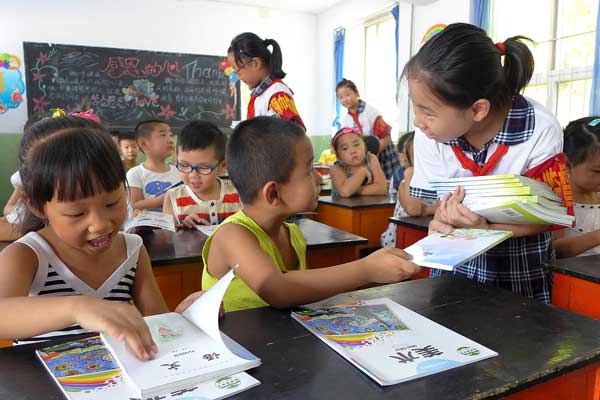In the new normal, the economy needs fine-tuning
Updated: 2015-08-24 09:35
By He Jun(China Daily)
|
|||||||||||
Various aspects of China's new economic normal become clearer by the day. One of those is that as the macroeconomy faces increasing downward pressure, regional economies are feeling the pinch, no more so than in the northeast and in the west, where decline has been substantial and sustained.
In Liaoning, fixed-asset investment has shrunk 15.4 percent this year, giving it the dubious distinction of being the only province or region that had negative growth. Growth in Heilongjiang province and the Inner Mongolia autonomous region was also in the doldrums. Growth in the west as a whole was 9.9 percent in the first half of the year, compared with 13.5 percent in East China and 15.7 percent in Central China. In Gansu, Shaanxi and Qinghai provinces and the Inner Mongolia and Xinjiang Uygur autonomous regions, growth this year is down 10 percent compared with last year.
With the sharp decline in investment, industrial growth also fell sharply. In the first half of the year, the added value of industrial enterprises above a designated size in Northeast China fell 2.2 percent year-on-year, 0.6 percentage points more than in the first quarter this year, and the employment rate in those enterprises fell 9 percent.
Although there has been no substantial decline in the west as a whole, the trend in certain provinces is one of sharp falls. In Shaanxi and Xinjiang, the cumulative growth in added industrial value fell nearly 50 percent in the first half-year compared with last year.
With respect to the decline in investment and industrial growth, population is a long-term worry. In Northeast China, for example, demographic problems are more marked than at a national level. A couple in the region gives birth to an average of less than one child, one-third lower than the national level. In addition to a rapidly aging population, the northeast has also suffered population outflows. According to the sixth national census, it is estimated that 2 million people leave Northeast China each year, and many of those are young people.
People with bachelor's degrees or higher qualifications, and those who are high-spending consumers, figure highly in this exodus. Apart from huge income disparities between north and south, young people are only too aware of the career opportunities that await them in the south. Even some who have studied for degrees for many years head for South China once they graduate.
In fact, a general trend is that as incomes rise, some people move to more affluent places to find a better life. As in the northeast, most are those with higher spending power.
In recent years, more and more elderly people in the northeast have taken off to the south for the winter, and the population there continues to grow. About 20,000 elderly people from Harbin, capital of Heilongjiang, now live in Sanya, Hainan province. It is easy to see and feel what attracts them: The good air, the scenery, food and better taxi services.
However, back home the exodus weakens spending power and further drains the city of economic vitality.
The real estate market is bound to slacken in cities where population inflows are small, and more so in those that have net outflows. In real estate, investment in the three northeastern provinces shrank last year, in Liaoning by 27 percent; Jilin 9.3 percent; and Heilongjiang 19.8 percent.
In the western provinces of Gansu, Shaanxi and Qinghai from January to May, real estate investment grew 0.9 percent, 4.3 percent and 4.3 percent respectively. In Shaanxi and Qinghai in the first quarter, real estate investment shrank. All this illustrates the similarities between the causes of economic decline in the northeast and the west.
First, their economies are over-reliant on resources and heavy chemical industries. As the economic downturn has led to falling demand, those industries have been drained of vitality and suffered big declines in investment. Long-term reliance on heavy chemical industries has also led to rigid institutional mechanisms, further limiting the scope for talent development.
Because of weakening spending power it becomes difficult for local governments to continue to use the old growth model to promote their economies. More importantly, the brain drain seriously erodes the potential of industrial innovation and revitalization in these areas.
If this economic downturn cannot be resolved in the short term, and the outflow of labor staunched, these areas are likely to continue losing growth momentum in coming years.
They will be reduced simply to exporting labor, resources and agricultural products to developed regions, and to become hinterlands for people from developed areas visiting them for leisure. That would entail the country greatly adjusting its national and regional investment, as well as its industrial and regional development policies. It is a matter of ensuring that, with the new normal, the Chinese economy is given the fine-tuning it needs so that all parts of the country benefit from the growth that lies ahead.
The author is a senior researcher with Anbound Consulting, a think tank for public policy. The views do not necessarily reflect those of China Daily.
Related Stories
Chinese economy adjusting to 'new normal' 2015-08-13 15:52
Multinationals need to change with the times 2015-08-11 11:18
A wave of startups raises tide of entrepreneurship 2015-07-21 09:04
CEO roundtable: 'new normal' & challenges 2015-06-29 10:29
'New normal' and challenges 2015-06-29 09:58
Today's Top News
Greek opposition tries to form government
12,000 troops, new armament to feature in Beijing parade
Preparations shutter Forbidden City
Changing face of illegal immigration
President Xi Jinping calls for crews not to ease up
Jon Bon Jovi sings in Mandarin for Chinese Valentine's Day
DPRK deploys more fire units to frontlines with ROK
No cyanide detected from Tianjin river section with fish deaths
Hot Topics
Lunar probe , China growth forecasts, Emission rules get tougher, China seen through 'colored lens', International board,
Editor's Picks

|

|

|

|

|

|






